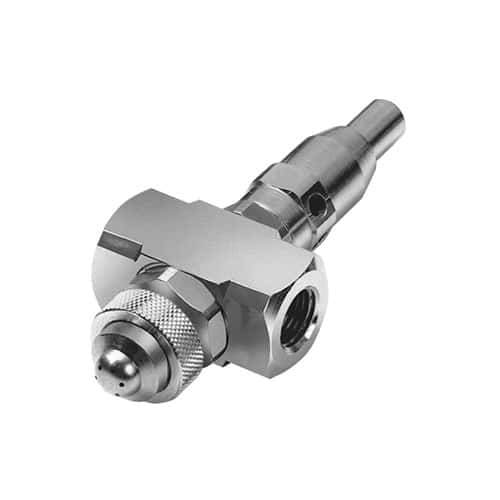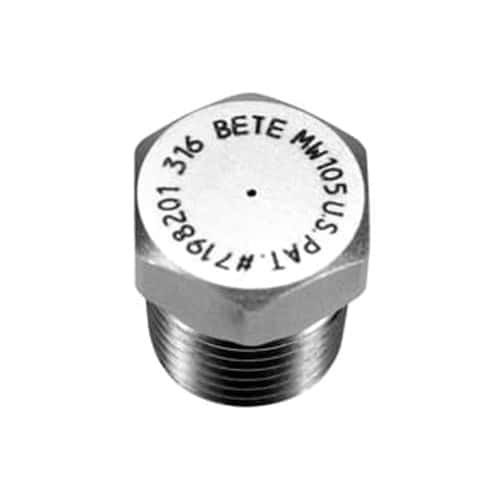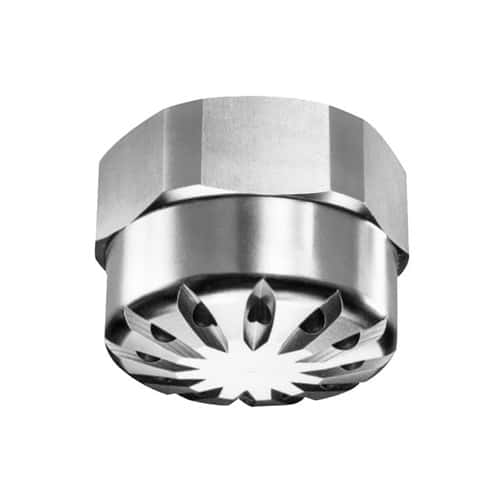Dust Suppression
Dust is a common by-product of many industrial processes. How serious a problem dust is depends upon the process and the nature of the dust. At one end of the scale production of dust can be merely an unpleasant inconvenience – at the other end of the scale it can pose a severe risk to humans and equipment. At the more severe end of the scale the reduction of dust contamination is often mandated by regulatory legislation, so effective dust control is a business-critical application.
Preventative dust control stops dust before it becomes a problem. Wetting piles and roads would be considered preventative dust control. Another often-overlooked method of prevention is controlling dust in process. This can be done by adding a small amount of water to aggregate or whatever material is likely to produce dust as it moves through a process.
Symptomatic dust control is dealing with dust once it is already airborne. This is usually only done when it is not practical to control dust preventatively. One example would be filling dump trucks from a pile with a loader. It is not practical to soak the pile such that the entire pile is damp, but a few well-placed nozzles around a filling point can reduce dust production significantly.
Air handling and vent duct dust control nozzles
Moving air through duct work is an essential part of many industrial processes. Often the air in the duct contains particulates which need to be removed, either for process control reasons, human health concerns, maintenance reduction, or simply good housekeeping. Airborne dust can be captured using a water spray. Water sprays have an inherent maintenance advantage over filter systems as they typically do not have to replaced frequently to maintain effective performance, low pressure drops, and overall system performance.
The premise is that when a water droplet comes into contact with a dust particle, they will agglomerate and the resulting combination will be too heavy to remain suspended in the air stream. The water droplet/dust particle combination will then fall out of the air stream where the dust can be disposed of. To obtain the most effective dust removal, the droplets should typically be 1 to 5 times the size of the dust that is being controlled. If the drops are too small, they will be unable to agglomerate with and knock down the dust particles. Conversely, water drops which are significantly larger than the dust particles form an air barrier around themselves, preventing the dust from gaining direct contact and encapsulation/agglomeration with the water droplet. BETE can provide droplet size distributions to aid in the selection of the correct nozzle and operating parameters.
For extremely fine particulates or particles in a fast-moving gas stream, a staged approach can be taken in which a spray of fine droplet sizes captures the very small particles and additional sprays of larger droplet sizes capture the smaller droplets.
Common air duct dust control nozzle uses and industries:
- Fume ducts at steel mills and other metal fabrication facilities
- Coal conveyer vents
- Fiberglass manufacturing and processing facilities
- Paint booths
- Material processing equipment
Area dust control nozzles
Mining and related processing industries are constantly challenged by the issue of dust control. Dust rapidly disperses, coating machinery, clogging equipment, creating issues with neighbouring properties, and presenting a health hazard. Nozzles can spray a fog of correctly-sized water droplets to remove the dust from the air. This mitigation is critical at conveyor transfer points, dump pits, loading hoppers, extraction points, rock crushers, truck dumping locations, stock piles, and any other place where product is moved or stored. Using a BETE manufactured nozzle and our engineers’ expertise is critical in getting the correct size water droplet for your application.
Spiral nozzles are the most commonly used nozzle to remove airborne dust as they provide a very fine droplet size at reasonable pressures. Recirculated water can be used for dust control provided a suitable filter is fitted on the supply line.
Common area dust control nozzle uses and industries:
- Dump pits
- Loading hoppers
- Extraction points
- Rock crushers
- Truck unloading locations
- Stock/storage piles






